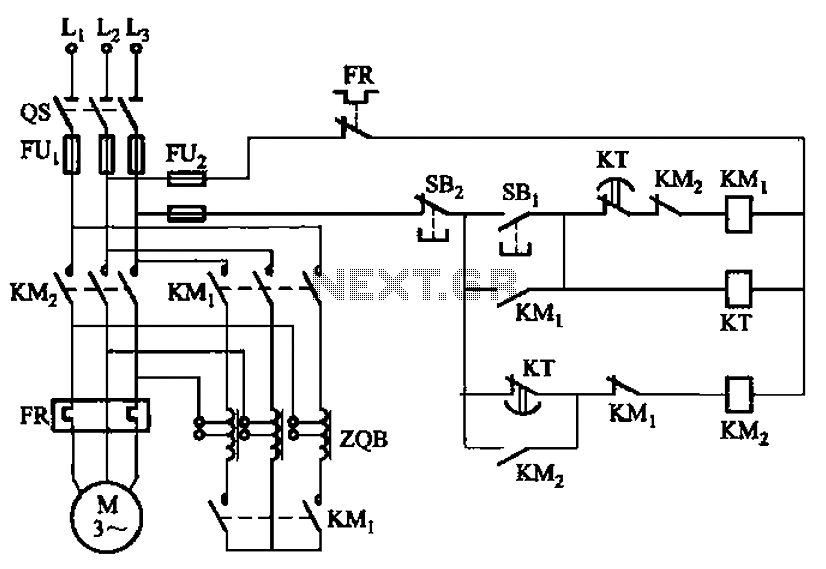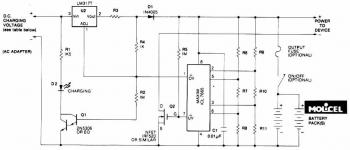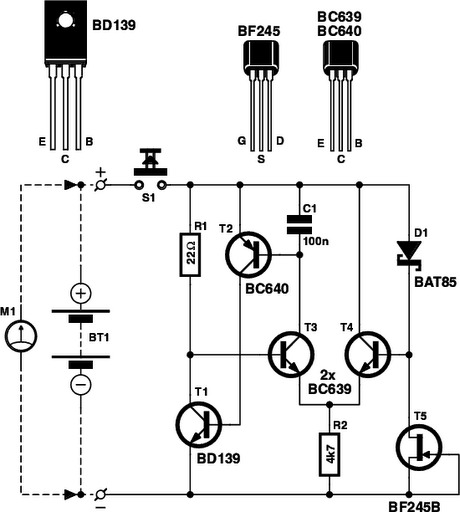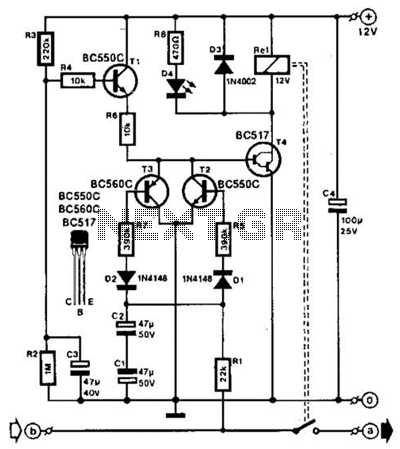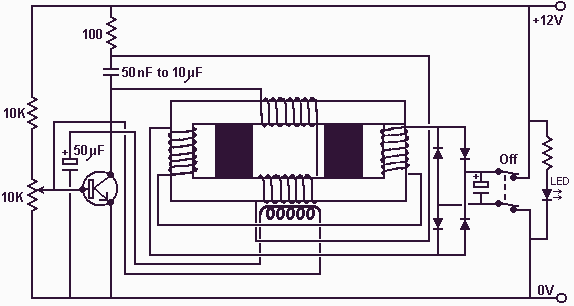
DC motor armature series resistance one way operation start dynamic braking circuit
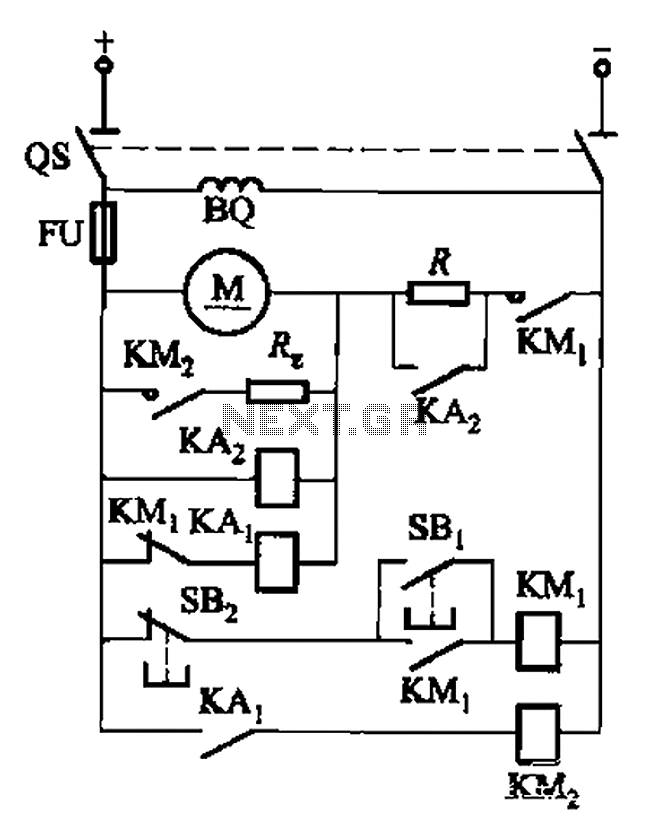
The circuit illustrated in Figure 3-196 features a starting resistance level and an undervoltage relay (KAz) that is controlled by the removal of the startup resistor. It also includes dynamic braking for shutdown purposes. The undervoltage relay (KAL) operates in parallel with the motor armature, reflecting the voltage across the motor armature as the speed changes. This circuit is utilized for controlling the speed variations.
The circuit design integrates several key components that contribute to its functionality. The starting resistance level is crucial for limiting the initial current during motor startup, preventing excessive inrush current that could damage the motor or associated circuitry. The undervoltage relay (KAz) serves as a protective mechanism, ensuring that the motor operates within safe voltage limits. When the startup resistor is removed, the relay activates, allowing the motor to run at its rated voltage.
During shutdown, dynamic braking is employed to quickly reduce the motor's speed. This is achieved by reversing the motor's field current, which generates a counter torque that decelerates the motor effectively. The dynamic braking feature is vital for applications requiring rapid stopping, enhancing safety and operational efficiency.
The second undervoltage relay (KAL) operates concurrently with the motor armature. It monitors the armature voltage, providing feedback on the motor's operational status. As the motor speed varies, KAL responds to changes in voltage, enabling precise control over the motor's speed. This feedback mechanism is essential for applications that demand variable speed control, allowing for adjustments based on load conditions or operational requirements.
Overall, the circuit exemplifies an effective design for motor control, combining starting resistance, undervoltage protection, and dynamic braking to achieve reliable and efficient operation. The integration of these elements ensures that the system can adapt to varying operational conditions while maintaining safety and performance standards. Circuit shown in Figure 3-196. The circuit has a resistance level start, under voltage relay KAz controlled by the startup resistor removed; shutdown, the use of dynamic brakin g. Undervoltage relay KAL, when KA2 coil operating in parallel with the motor armature, they reflect the motor armature voltage, speed changes. It can be said that the circuit is used to control the speed of change.
The circuit design integrates several key components that contribute to its functionality. The starting resistance level is crucial for limiting the initial current during motor startup, preventing excessive inrush current that could damage the motor or associated circuitry. The undervoltage relay (KAz) serves as a protective mechanism, ensuring that the motor operates within safe voltage limits. When the startup resistor is removed, the relay activates, allowing the motor to run at its rated voltage.
During shutdown, dynamic braking is employed to quickly reduce the motor's speed. This is achieved by reversing the motor's field current, which generates a counter torque that decelerates the motor effectively. The dynamic braking feature is vital for applications requiring rapid stopping, enhancing safety and operational efficiency.
The second undervoltage relay (KAL) operates concurrently with the motor armature. It monitors the armature voltage, providing feedback on the motor's operational status. As the motor speed varies, KAL responds to changes in voltage, enabling precise control over the motor's speed. This feedback mechanism is essential for applications that demand variable speed control, allowing for adjustments based on load conditions or operational requirements.
Overall, the circuit exemplifies an effective design for motor control, combining starting resistance, undervoltage protection, and dynamic braking to achieve reliable and efficient operation. The integration of these elements ensures that the system can adapt to varying operational conditions while maintaining safety and performance standards. Circuit shown in Figure 3-196. The circuit has a resistance level start, under voltage relay KAz controlled by the startup resistor removed; shutdown, the use of dynamic brakin g. Undervoltage relay KAL, when KA2 coil operating in parallel with the motor armature, they reflect the motor armature voltage, speed changes. It can be said that the circuit is used to control the speed of change.
